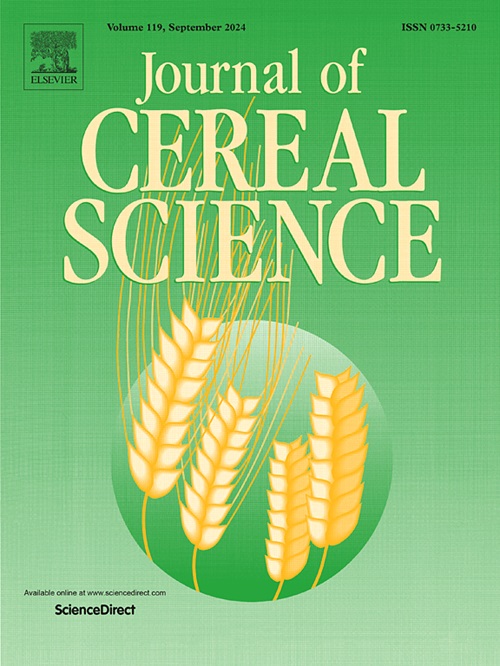Effect of GLU-A1 locus substitution with GLU-D1 on biochemical and rheological properties in two Italian bread wheat lines
IF 3.7
2区 农林科学
Q2 FOOD SCIENCE & TECHNOLOGY
引用次数: 0
Abstract
Two Italian bread wheat lines, N11 and N18, were used as donors of initial genetic material to generate new lines through chromosomal engineering to develop lines with improved technological properties. Overall, this work resulted in the generation of two potential marketable lines expressing six different high molecular weight glutenin subunits due to the introgression of Glu-D1a and Glu-D1d allelic variants into the GLU-A1 locus of N18 and N11, respectively. Furthermore, two other lines expressing a double dose of the allelic variant of the parental lines, 2 + 12 for N11 and 5 + 10 for N18 were crafted.
The harvest from two experimental seasons was evaluated at the biochemical and genetic level, by UPP, A-PAGE, SDS-PAGE, and gene expression, and at the technological level using alveograph and farinograph tests. Despite adding gluten subunit pair 5 + 10, dough quality didn't improve. This lack of improvement may be caused by i) the excessive dough tenacity in lines that already carry the 5 + 10 or 2 + 12 subunit pair at the GLU-D1 locus; ii) the specific genetic backgrounds of the parental lines. The improvement in rheological properties was found to be more strongly associated with the substitution at the GLU-A1 locus with GLU-D1 than with the genetic background of the lines.

用GLU-D1取代GLU-A1位点对两个意大利面包小麦品系生化和流变特性的影响
以2个意大利面包小麦品系N11和N18为初始遗传物质供体,通过染色体工程选育出技术性状改良的新品系。总的来说,由于Glu-D1a和Glu-D1d等位基因变体分别渗入N18和N11的GLU-A1位点,这项工作产生了两个潜在的可销售的品系,表达了6个不同的高分子量谷蛋白亚基。此外,还制作了另外两个表达双倍剂量亲本系等位基因变异的品系,N11为2 + 12,N18为5 + 10。在生化和遗传水平上,通过UPP、A-PAGE、SDS-PAGE和基因表达来评估两个实验季节的收获,在技术水平上,使用肺泡图和脂肪图测试来评估。添加面筋亚基对5 + 10后,面团品质无明显改善。这种缺乏改善的原因可能是:1)在GLU-D1位点已经携带5 + 10或2 + 12亚基对的品系中,面团韧性过高;亲本系的具体遗传背景。研究发现,流变特性的改善与GLU-A1位点与GLU-D1位点的替换密切相关,而与遗传背景无关。
本文章由计算机程序翻译,如有差异,请以英文原文为准。
求助全文
约1分钟内获得全文
求助全文
来源期刊

Journal of Cereal Science
工程技术-食品科技
CiteScore
7.80
自引率
2.60%
发文量
163
审稿时长
38 days
期刊介绍:
The Journal of Cereal Science was established in 1983 to provide an International forum for the publication of original research papers of high standing covering all aspects of cereal science related to the functional and nutritional quality of cereal grains (true cereals - members of the Poaceae family and starchy pseudocereals - members of the Amaranthaceae, Chenopodiaceae and Polygonaceae families) and their products, in relation to the cereals used. The journal also publishes concise and critical review articles appraising the status and future directions of specific areas of cereal science and short communications that present news of important advances in research. The journal aims at topicality and at providing comprehensive coverage of progress in the field.
 求助内容:
求助内容: 应助结果提醒方式:
应助结果提醒方式:


